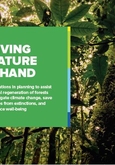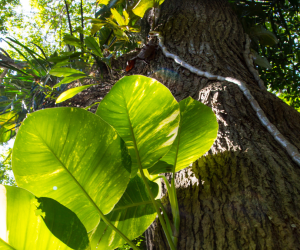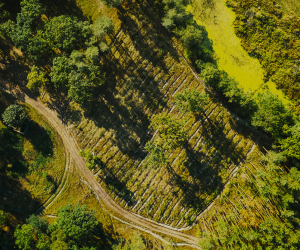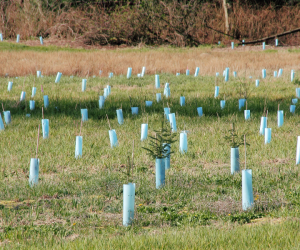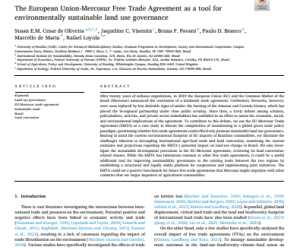Publications > Article
Biological Reviews: The role of land-use history in driving successional pathways and its implications for the restoration of tropical forests
Secondary forests are increasingly important components of human-modified landscapes in the tropics. Successional pathways, however, can vary enormously across and within landscapes, with divergent regrowth rates, vegetation structure and species composition. While climatic and edaphic conditions drive variations across regions, land-use history plays a central role in driving alternative successional pathways within human-modified landscapes. How land use affects succession depends on its intensity, spatial extent, frequency, duration and management practices, and is mediated by a complex combination of mechanisms acting on different ecosystem components and at different spatial and temporal scales. We review the literature aiming to provide a comprehensive understanding of the mechanisms underlying the long-lasting effects of land use on tropical forest succession and to discuss its implications for forest restoration.
The study presents a framework based on the hierarchical model of succession and ecological filtering theory and a review that shows that our knowledge is mostly derived from studies in Neotropical forests regenerating after abandonment of shifting cultivation or pasture systems. Vegetation is the ecological component assessed most often. Little is known regarding how the recovery of belowground processes and microbiota communities is affected by previous land-use history. In published studies, land-use history has been mostly characterized by type, without discrimination of intensity, extent, duration or frequency. The researchers compiled and discussed the metrics used to describe land-use history, aiming to facilitate future studies. The literature shows that (i) species availability to succession is affected by transformations in the landscape that affect dispersal, and by management practices and seed predation, which affect the composition and diversity of propagules on site. Once a species successfully reaches an abandoned field, its establishment and performance are dependent on resistance to management practices, tolerance to (modified) soil conditions, herbivory, competition with weeds and invasive species, and facilitation by remnant trees. (ii) Structural and compositional divergences at early stages of succession remain for decades, suggesting that early communities play an important role in governing further ecosystem functioning and processes during succession. Management interventions at early stages could help enhance recovery rates and manipulate successional pathways. (iii) The combination of local and landscape conditions defines the limitations to succession and therefore the potential for natural regeneration to restore ecosystem properties effectively. The knowledge summarized here could enable the identification of conditions in which natural regeneration could efficiently promote forest restoration, and where specific management practices are required to foster succession.
Finally, characterization of the landscape context and previous land-use history is essential to understand the limitations to succession and therefore to define cost-effective restoration strategies. Advancing knowledge on these two aspects is key for finding generalizable relations that will increase the predictability of succession and the efficiency of forest restoration under different landscape contexts.
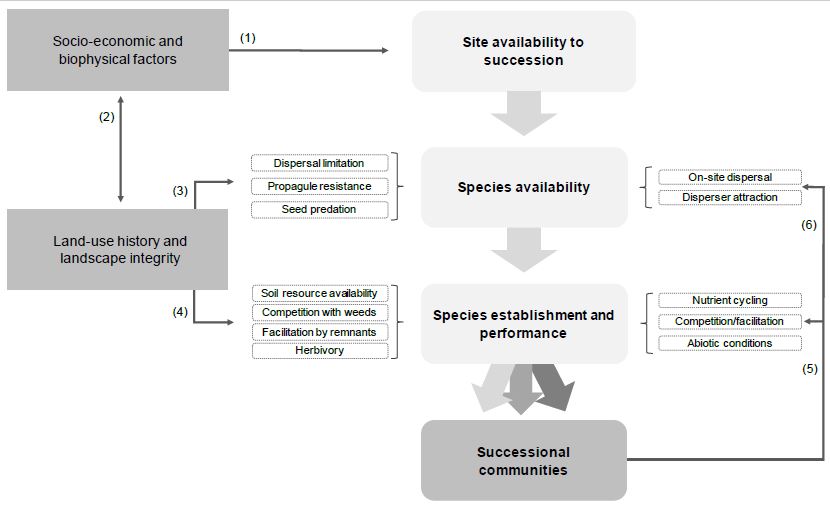
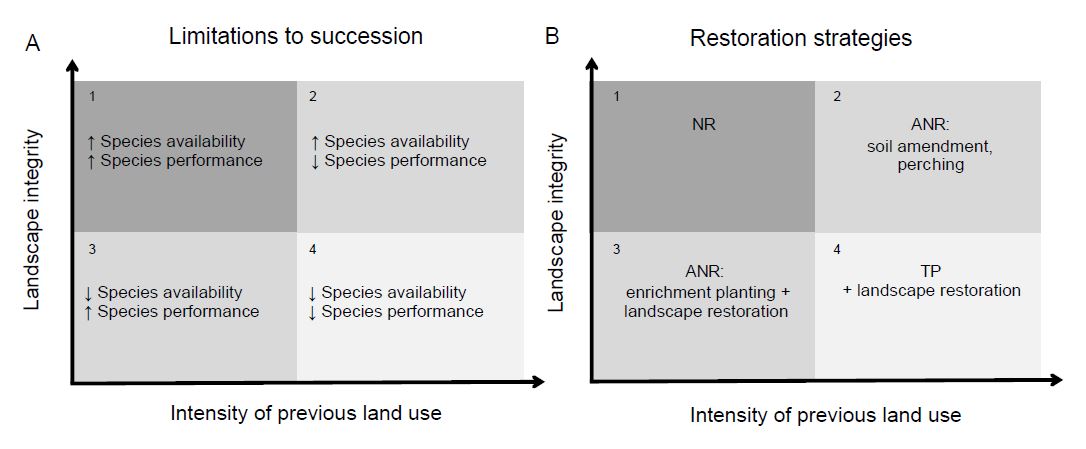
Related Themes
Related Content
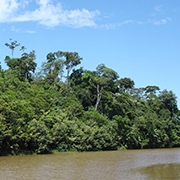
Large-scale ecological restoration of Mata Atlantica
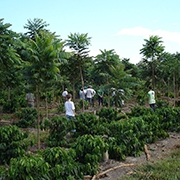
Decision-making towards a more sustainable agriculture
